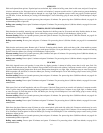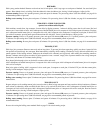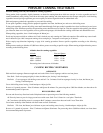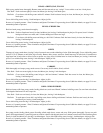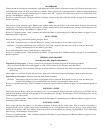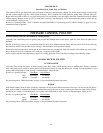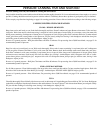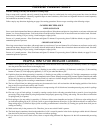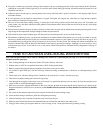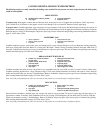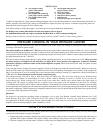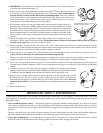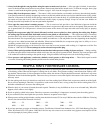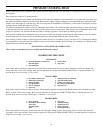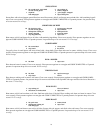
18
PRessuRe CanninG souPs
Pressure canning is the only safe method for canning soups.
Soup or soup stock is quickly and easily canned. Soup should always be cooked ready for serving, then poured into clean, hot Mason
jars, leaving 1-inch headspace. Generally, vegetable soups are more satisfactory if the stock and vegetable mixture is canned separately
and combined at the time of serving.
Follow step-by-step directions beginning on page 6 for canning procedure. Process soups according to the following recipes.
CANNING RECIPES: SOUP
BEEF SOUP STOCK
Saw or crack fresh trimmed beef bones to enhance extraction of flavor. Rinse bones and place in a large kettle, cover bones with water and
simmer 3 to 4 hours. Remove bones. Cool broth; skim off and discard fat. Remove bits of meat from bones and add to broth, if desired.
Reheat broth to boiling. Fill jars, leaving 1-inch headspace. Adjust jar lids.
Process at 11 pounds pressure – Pints 20 minutes and Quarts 25 minutes. For processing above 2,000 feet altitude, see page 15 for rec-
ommended pounds of pressure.
CHICKEN SOUP STOCK
Place large carcass bones in stockpot, add enough water to cover bones. Cover and simmer 30 to 45 minutes or until meat can be easily
removed from bones. Remove bones. Cool broth; skim off and discard fat. Remove bits of meat from bones and add to broth, if desired.
Reheat broth to boiling. Fill jars, leaving 1-inch headspace. Adjust jar lids.
Process at 11 pounds pressure – Pints 20 minutes and Quarts 25 minutes. For processing above 2,000 feet altitude, see page 15 for rec-
ommended pounds of pressure.
HelPful HinTs foR PRessuRe CanninG
Bubbles often appear in the jar after it is removed from canner because food is still boiling in jar. Ordinarily bubbles do not appear
once the product has been allowed to thoroughly cool.
Jar breakage during processing is caused by: (1) Packing jar too solidly or overfilling; (2) Weakened, cracked jars; (3) Jars touching
bottom of canner; (4) Lids improperly tightened; (5) Use of jars other than Mason jars.
Liquid lost from jars during processing is caused by: (1) Packing jar too solidly or overfilling; (2) Too high a temperature or too high
pressure; (3) Variation or sudden lowering of temperature in the canner. When processing food, pressure regulator should not be taken
off the vent pipe and cover should not be removed until air vent/cover lock has dropped and pressure has been completely reduced;
(4) Failure to adjust jar lids according to manufacturer’s directions.
The loss of liquid from jars during processing may be unattractive but it will not interfere with the keeping qualities of the food as
long as the jar was processed correctly and is sealed.
It is better to overprocess food than underprocess as overprocessing will do little harm, but underprocessing may result in spoilage
and unsafe food.
Flat sour, a type of food spoilage, is caused by canning overripe food or allowing precooked foods to stand in jar too long before
processing. It may be prevented by using fresh products and properly processing, cooling, and storing. Flat sour shows no indication
of spoilage until jar is opened.
Food spoilage or jars not sealing is caused by: (1) Failure to follow exact timetables and recipes; (2) Failure to wipe sealing edge of
jar clean before placing lid on jar; (3) Foods, seeds, or grease lodged between lid and jar; (4) Jars which are nicked or cracked or have
sharp sealing edges; (5) Failure to adjust jar lids according to manufacturer’s directions; (6) Turning jars upside down while jars are
cooling and sealing.
Mold can form only in the presence of air. Therefore, jars are not sealed if mold is present.
The black deposit sometimes found on the underside of a lid is caused by tannins in the food or hydrogen sulfide which is liberated
from the food by the heat of processing. This does not indicate spoilage.
If a jar does not seal, use the food at once, freeze or repack using different lids. Reprocess for the full recommended processing
time.



